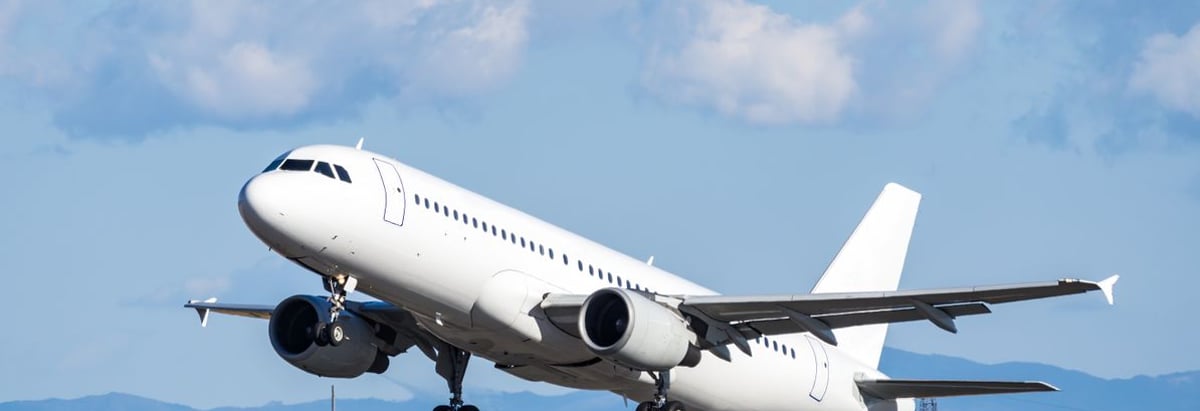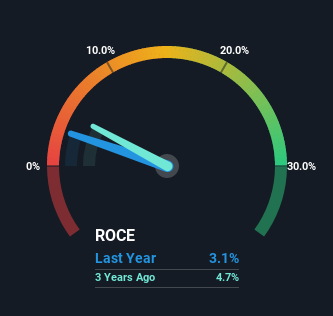Stock Analysis
Be Wary Of Singapore Airlines (SGX:C6L) And Its Returns On Capital

What trends should we look for it we want to identify stocks that can multiply in value over the long term? In a perfect world, we'd like to see a company investing more capital into its business and ideally the returns earned from that capital are also increasing. If you see this, it typically means it's a company with a great business model and plenty of profitable reinvestment opportunities. Having said that, from a first glance at Singapore Airlines (SGX:C6L) we aren't jumping out of our chairs at how returns are trending, but let's have a deeper look.
What Is Return On Capital Employed (ROCE)?
If you haven't worked with ROCE before, it measures the 'return' (pre-tax profit) a company generates from capital employed in its business. Analysts use this formula to calculate it for Singapore Airlines:
Return on Capital Employed = Earnings Before Interest and Tax (EBIT) ÷ (Total Assets - Current Liabilities)
0.031 = S$1.2b ÷ (S$51b - S$11b) (Based on the trailing twelve months to September 2022).
Therefore, Singapore Airlines has an ROCE of 3.1%. Ultimately, that's a low return and it under-performs the Airlines industry average of 10%.
View our latest analysis for Singapore Airlines

Above you can see how the current ROCE for Singapore Airlines compares to its prior returns on capital, but there's only so much you can tell from the past. If you'd like to see what analysts are forecasting going forward, you should check out our free report for Singapore Airlines.
What Can We Tell From Singapore Airlines' ROCE Trend?
In terms of Singapore Airlines' historical ROCE movements, the trend isn't fantastic. Over the last five years, returns on capital have decreased to 3.1% from 5.3% five years ago. Although, given both revenue and the amount of assets employed in the business have increased, it could suggest the company is investing in growth, and the extra capital has led to a short-term reduction in ROCE. And if the increased capital generates additional returns, the business, and thus shareholders, will benefit in the long run.
The Bottom Line On Singapore Airlines' ROCE
Even though returns on capital have fallen in the short term, we find it promising that revenue and capital employed have both increased for Singapore Airlines. And there could be an opportunity here if other metrics look good too, because the stock has declined 18% in the last five years. So we think it'd be worthwhile to look further into this stock given the trends look encouraging.
If you want to know some of the risks facing Singapore Airlines we've found 2 warning signs (1 is potentially serious!) that you should be aware of before investing here.
While Singapore Airlines isn't earning the highest return, check out this free list of companies that are earning high returns on equity with solid balance sheets.
Valuation is complex, but we're helping make it simple.
Find out whether Singapore Airlines is potentially over or undervalued by checking out our comprehensive analysis, which includes fair value estimates, risks and warnings, dividends, insider transactions and financial health.
View the Free AnalysisHave feedback on this article? Concerned about the content? Get in touch with us directly. Alternatively, email editorial-team (at) simplywallst.com.
This article by Simply Wall St is general in nature. We provide commentary based on historical data and analyst forecasts only using an unbiased methodology and our articles are not intended to be financial advice. It does not constitute a recommendation to buy or sell any stock, and does not take account of your objectives, or your financial situation. We aim to bring you long-term focused analysis driven by fundamental data. Note that our analysis may not factor in the latest price-sensitive company announcements or qualitative material. Simply Wall St has no position in any stocks mentioned.
About SGX:C6L
Singapore Airlines
Together with subsidiaries, provides passenger and cargo air transportation services under the Singapore Airlines and Scoot brands in East Asia, the Americas, Europe, Southwest Pacific, West Asia, and Africa.
Excellent balance sheet established dividend payer.

